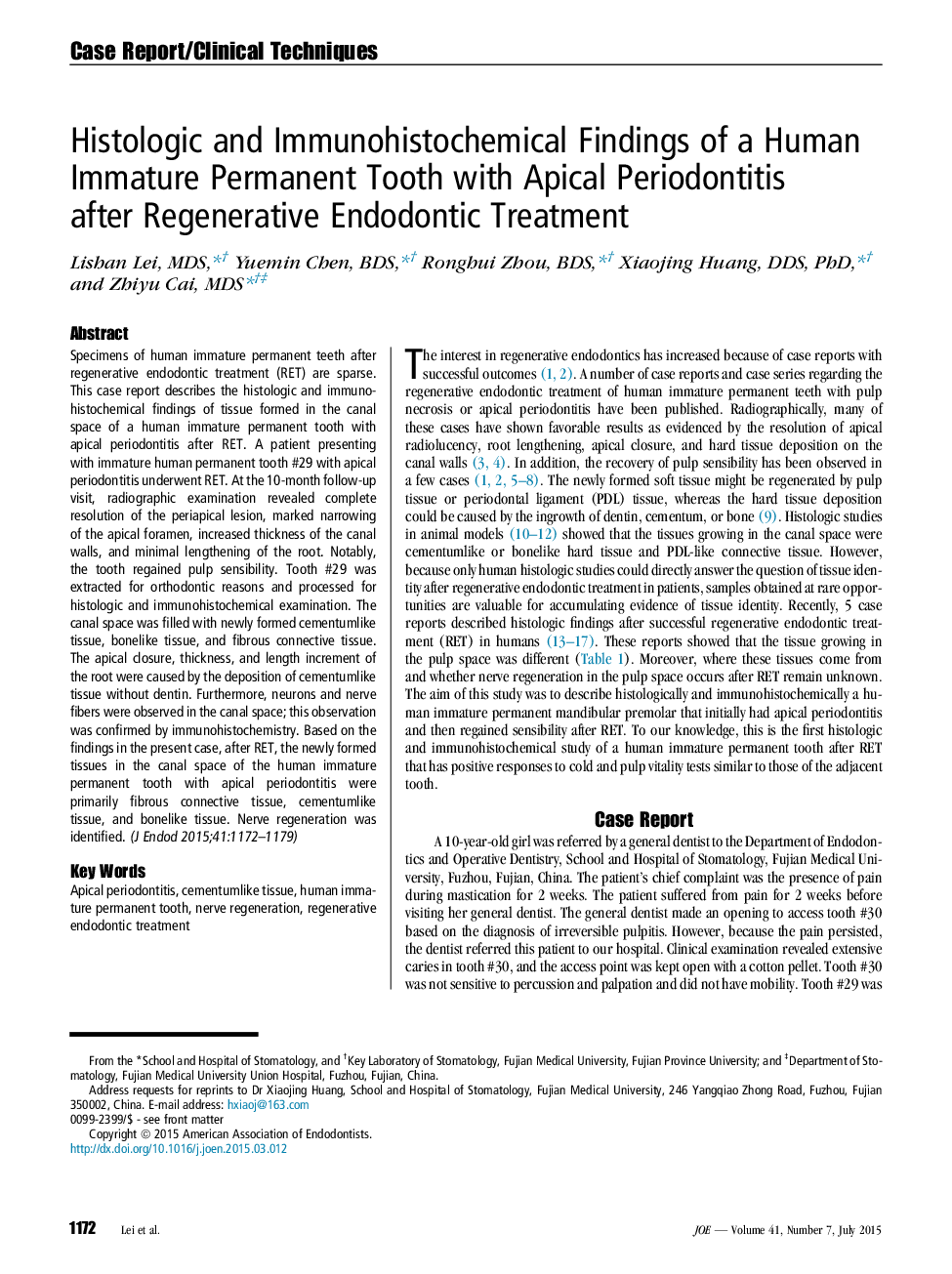| Article ID | Journal | Published Year | Pages | File Type |
|---|---|---|---|---|
| 3147483 | Journal of Endodontics | 2015 | 8 Pages |
Specimens of human immature permanent teeth after regenerative endodontic treatment (RET) are sparse. This case report describes the histologic and immunohistochemical findings of tissue formed in the canal space of a human immature permanent tooth with apical periodontitis after RET. A patient presenting with immature human permanent tooth #29 with apical periodontitis underwent RET. At the 10-month follow-up visit, radiographic examination revealed complete resolution of the periapical lesion, marked narrowing of the apical foramen, increased thickness of the canal walls, and minimal lengthening of the root. Notably, the tooth regained pulp sensibility. Tooth #29 was extracted for orthodontic reasons and processed for histologic and immunohistochemical examination. The canal space was filled with newly formed cementumlike tissue, bonelike tissue, and fibrous connective tissue. The apical closure, thickness, and length increment of the root were caused by the deposition of cementumlike tissue without dentin. Furthermore, neurons and nerve fibers were observed in the canal space; this observation was confirmed by immunohistochemistry. Based on the findings in the present case, after RET, the newly formed tissues in the canal space of the human immature permanent tooth with apical periodontitis were primarily fibrous connective tissue, cementumlike tissue, and bonelike tissue. Nerve regeneration was identified.
